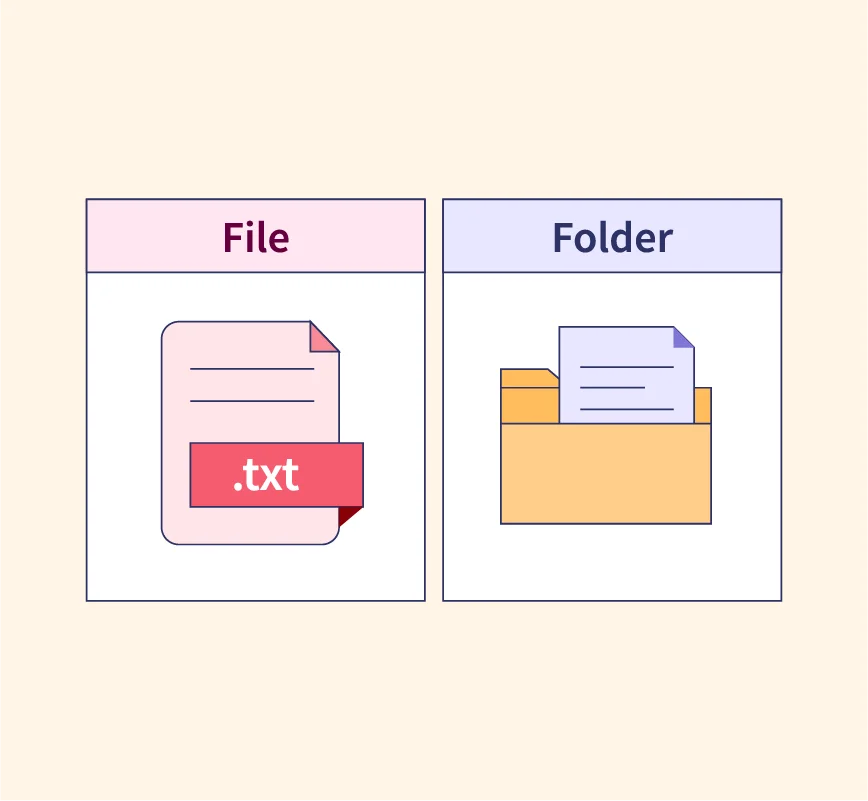Introduction
A computer file is more than just a collection of data; it’s a foundational element of any digital environment. Understanding what a computer file is, how it functions, and the best practices for managing them can significantly improve your digital efficiency. This article delves into the intricacies of computer files, their management, and best practices to keep your digital world organized.
What is a Computer File?
A computer file is a collection of data stored in one unit, identified by a filename. Files can contain a wide variety of data such as text, images, audio, or even software code. Each file type is distinguished by its file extension (e.g., .txt, .jpg, .exe), which indicates the format and the type of data it contains.
For instance, a .docx file is typically a Microsoft Word document, while .mp3 files store audio data. In most cases, the type of data determines how the file can be opened or used.
How are Computer Files Organized?
Files are organized in folders (or directories) on your computer, much like physical files are stored in folders within a filing cabinet. This system makes it easier to navigate and retrieve specific files. For example, documents might be stored in a folder labeled “Documents”, while pictures are kept in a “Photos” folder.
File systems like Windows Explorer (on Microsoft systems) and Finder (on macOS) allow users to create folders, subfolders, and even organize files by categories, tags, or file properties【8†source】【9†source】.
What Are the Types of Files in Computers?
Files are typically categorized based on the kind of data they store. Here are some common types:
- Text files (e.g.,
.txt,.docx): Contain written data, code, or documents. - Image files (e.g.,
.jpg,.png): Store visual data. - Audio files (e.g.,
.mp3,.wav): Contain sound data. - Video files (e.g.,
.mp4,.mov): Store video recordings or visual data. - Executable files (e.g.,
.exe,.bat): Contain programs or scripts.
Each file type serves a specific purpose and is associated with particular software that can read and modify them【9†source】.
How Do You Manage Files on Your Computer?
Managing files effectively involves organizing them in a way that makes sense for your workflow. Here are some best practices:
1. Folder Organization
Create specific folders for different types of files. For example, you can create a folder for Work Documents, another for Personal Projects, and subfolders within each to further separate files.
2. Use Descriptive File Names
Instead of naming a file “Document1”, use a more descriptive name like “Project_Report_March_2024”. This makes it easier to find files when searching.
3. Regular Backups
Regularly back up important files to prevent data loss. You can use external hard drives or cloud storage solutions like Google Drive or Dropbox.
4. Delete Unnecessary Files
Periodically delete old or unused files to free up storage space. Keeping your file system tidy reduces clutter and improves your computer's performance【8†source】.
People Also Ask: Detailed Answers
What is a Computer File and Example?
A computer file is a digital storage container for data. Examples include:
- Word Documents (.docx): Used for storing text-based files.
- Images (.jpg, .png): Photos or graphics used in various visual media.
- Audio Files (.mp3): Digital recordings or music.
These files allow the operating system to organize and manage different types of data easily.
How are Computer Files Organized?
Files are organized into directories or folders. This hierarchical system is standard on most operating systems. For example, Windows uses File Explorer to manage files, where users can create new folders and subfolders. This system mimics physical file storage, where files are placed into specific "drawers" for easy access【9†source】.
What Are the Types of Files in Computers?
Types of files typically refer to the extension or file type:
- Documents (
.docx,.txt): Text and written information. - Multimedia (
.mp3,.mp4,.jpg): Media files such as audio, video, and images. - Executable (
.exe,.bat): Files used to run software.
Understanding file types helps in selecting the right application to open them and ensures proper handling when transferring data【9†source】.
How Do I Manage Files on My Computer?
Managing files involves categorizing, backing up, and organizing data. Tools like Windows File Explorer or macOS Finder provide user-friendly ways to view, edit, and move files. Best practices include:
- Naming files clearly
- Using appropriate folder structures
- Regularly cleaning up unused files【8†source】.
Related Questions and Recommendations
- Types of Computer Files: Explore different file extensions and their applications to understand which types of data are best suited for your work.
- How to Organize Files on a Computer: Learn methods to categorize and quickly access essential documents, enhancing your productivity.
- How to Manage Computer Files Efficiently: Find tips on decluttering your digital workspace, ensuring that your system runs smoothly【9†source】.



Publicar un comentario